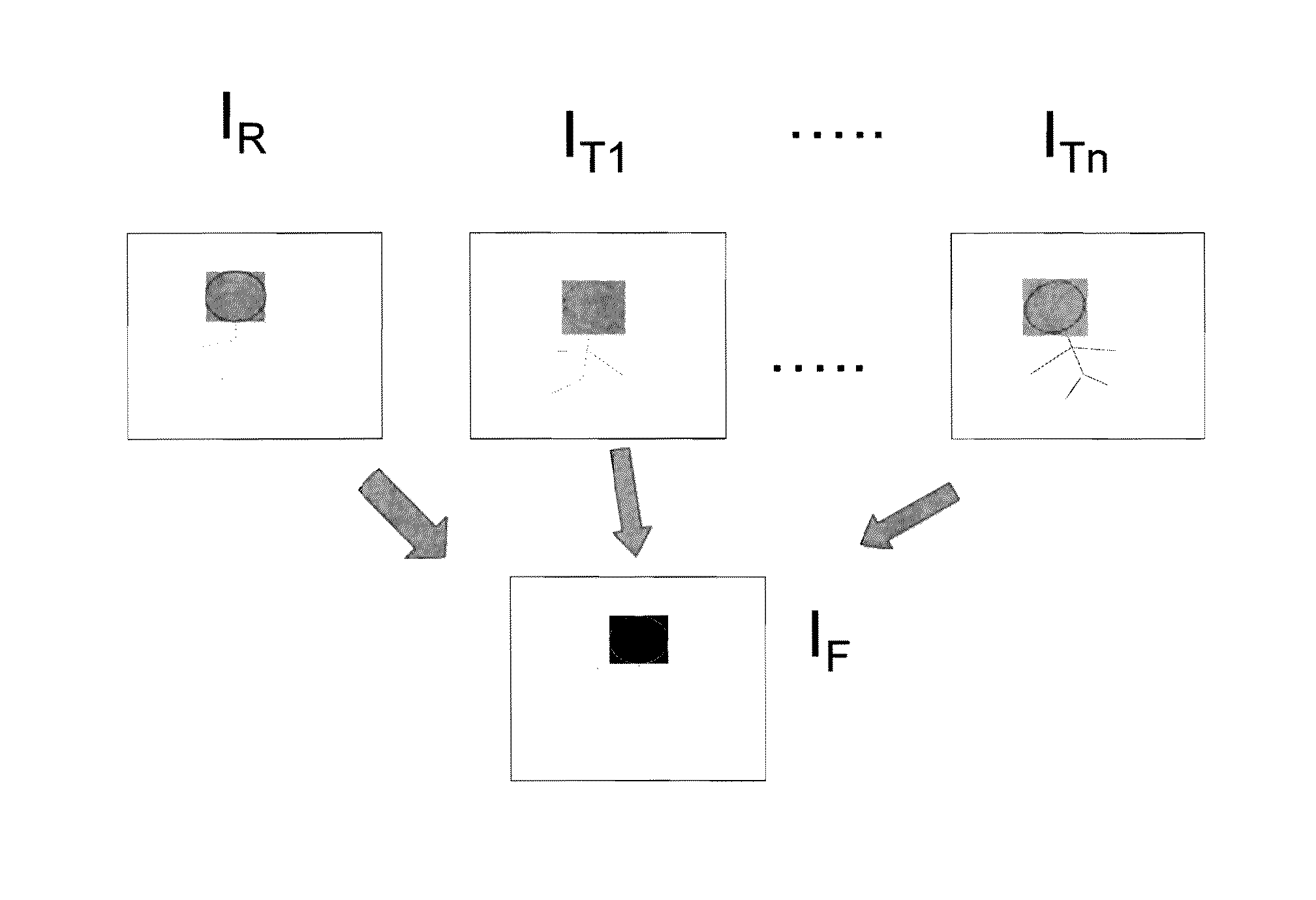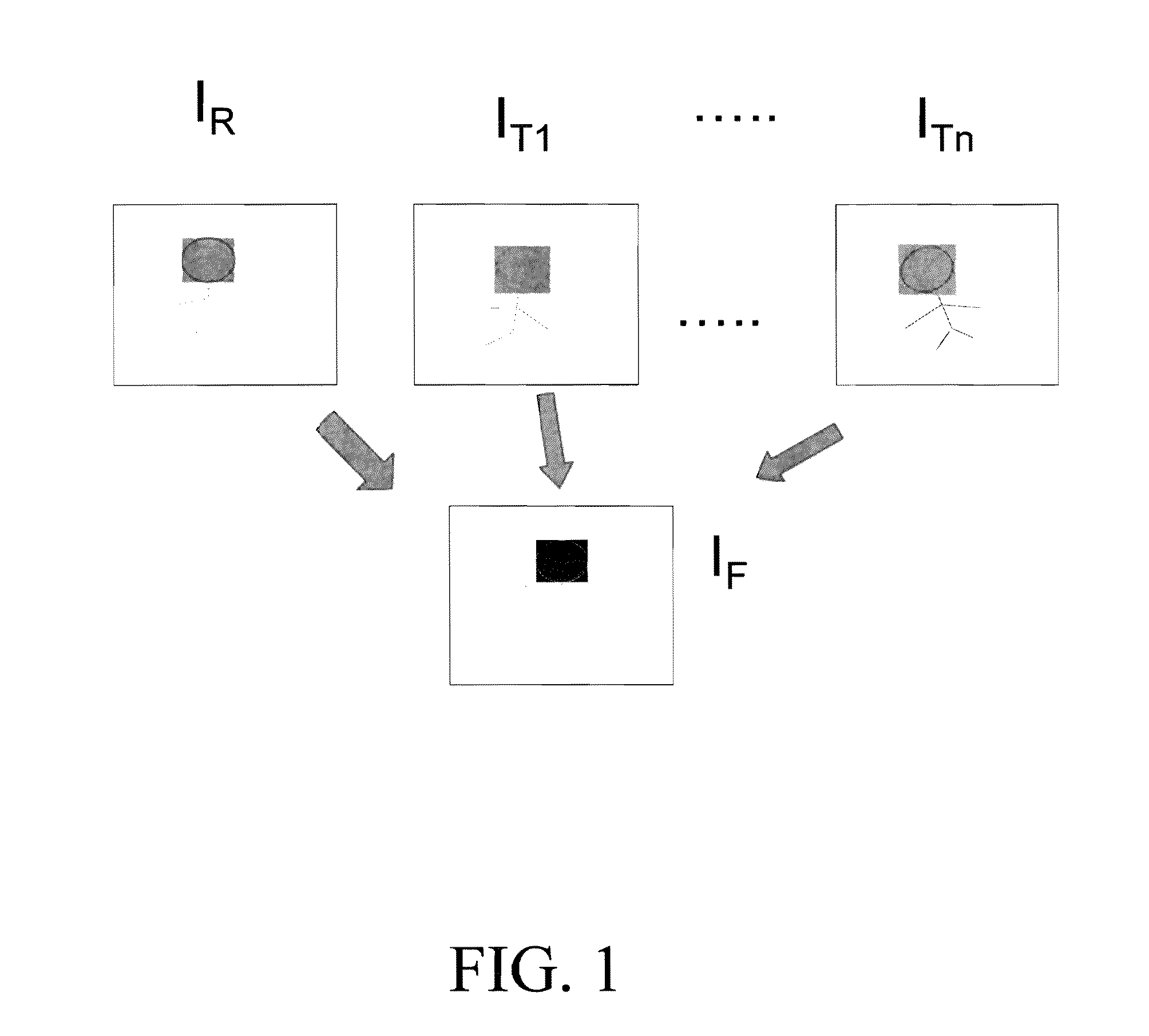Target image registration and fusion
- Summary
- Abstract
- Description
- Claims
- Application Information
AI Technical Summary
Benefits of technology
Problems solved by technology
Method used
Image
Examples
example calculation
[0084]To illustrate the “skeletonization” effect of the first solution component, an example is worked consisting of an image involving a geometric figure as the reference image IR. As before, two target images IT1 and IT2 will be combined with IR to produce a fused image IF. The overall goal is that fused image IF combines important details about the target images and enhances the reference image in terms of its information content. In this example, the two target images are deliberately selected to provide additional information and do not require weighing of the second solution component. The images in this example were also constructed on a computer using MATLAB® (with its image processing toolbox) to apply equations (2) through (14) to produce the same result as shown in FIGS. 5-8.
[0085]The reference image IR in this example is a simple right triangle 50 on a white background as shown in FIG. 5.
[0086]The line widths of triangle 50 are one pixel wide. The dimensions of triangle ...
PUM
 Login to View More
Login to View More Abstract
Description
Claims
Application Information
 Login to View More
Login to View More - R&D
- Intellectual Property
- Life Sciences
- Materials
- Tech Scout
- Unparalleled Data Quality
- Higher Quality Content
- 60% Fewer Hallucinations
Browse by: Latest US Patents, China's latest patents, Technical Efficacy Thesaurus, Application Domain, Technology Topic, Popular Technical Reports.
© 2025 PatSnap. All rights reserved.Legal|Privacy policy|Modern Slavery Act Transparency Statement|Sitemap|About US| Contact US: help@patsnap.com



